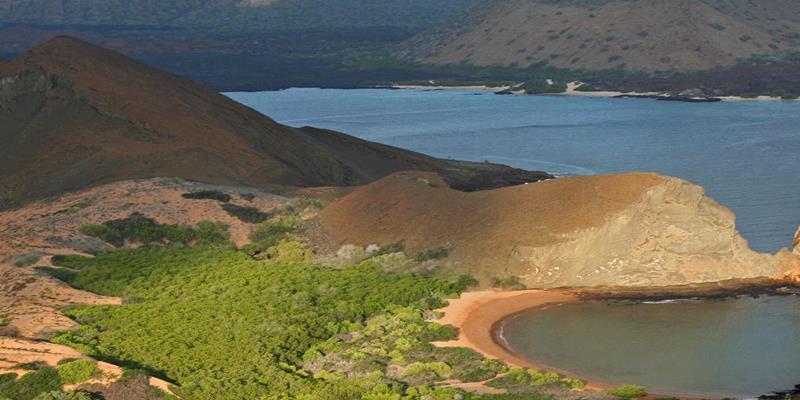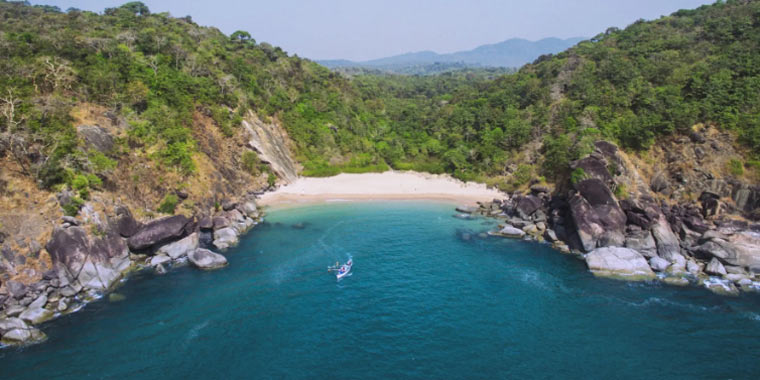Top 6 Things That You Must Need To Know About The Galápagos Islands
Mar 21, 2024 By Juliana Daniel
Greetings from the wonderful Galpagos Islands, a location full of treasures waiting to be explored! Tucked away in the Pacific, these islands are unlike anything else. There's much more to learn about the Galpagos Islands than just the well-known species you may have heard about. Come along with us as we set out to learn seven surprising yet interesting facts about these amazing islands.
Discover the amazing marine life under the seas and where evolution began the Galpagos Islands are brimming with mysteries just waiting to be discovered. As we explore the mysteries of the Galpagos, grab your snorkel, pull on your trekking boots, and prepare yourself for an experience unlike any other! There's plenty to learn in this distinctive and stunning archipelago for everyone, regardless of interests in nature, science, or general curiosity.
1. Birthplace Of Evolution
Greetings from the Galpagos Islands, the birthplace of evolution's magic! These islands were essential to the development of our knowledge of the evolutionary history of species. Here, renowned scientist Charles Darwin took note of the unusual flora and animals that would later inspire his revolutionary theory of evolution through natural selection. Massive tortoises and marine iguanas are among the many unique species that can only be found on the Galpagos Islands.
Darwin came up with the theory that species might alter over generations to survive more effectively in their habitats after observing these amazing animals and realizing how they had adapted to their surroundings in certain ways. The Galpagos Islands are still an ongoing laboratory for researchers looking into biodiversity and evolution today. One of history's most significant scientific hypotheses was inspired by the extraordinary diversity of life that visitors can see directly on these islands.
2. Remote And Isolated
The remote islands of the Galpagos are isolated from the busy metropolis and unlike any other location on Earth. These isolated and distant islands throughout the Pacific Ocean serve as a sanctuary for rare species that cannot be found elsewhere. Many species have undergone amazing evolution due to their isolation, spending millions of years adjusting to their new environments.
When visiting the Galpagos, visitors frequently get a sense of transcending into another universe where nature rules supreme and time passes slowly. The chance to study the amazing diversity of species found here has lured explorers and scientists to the islands for ages despite their remote location. Even though it's now simpler to get to the Galpagos, the islands maintain their sense of seclusion, allowing tourists to escape civilization and take in the splendor of the natural environment.
3. Volcanic Origins

The interesting volcanic origin of the Galpagos Islands is well-known for its breathtaking vistas and distinctive biodiversity. Deep under the ocean's surface, volcanic activity created these islands millions of years ago. Lava flows and volcanic eruptions sculpted the area throughout time, giving rise to the untamed landscape and striking coasts that now characterize the Galpagos. Numerous islands in the archipelago continue to be active volcanoes, with sporadic eruptions reshaping the terrain and forming new landmasses.
The Galpagos' volcanic soil is exceptionally fertile, sustaining various plant life while contributing vital nutrients to the island's environment. When visiting lava tunnels, craters, wells, and geological phenomena produced by millennia of volcanic pressures, visitors to the Galpagos may get a personal look at the sheer strength of volcanic activity. The Galpagos Islands are a monument to the tenacity of life, with wildlife and plants flourishing in this dynamic and constantly shifting environment despite the possible risks posed by volcanic activity.
4. Remarkable Marine Life
Divers and snorkelers will find heaven at the Galpagos Islands due to their astounding marine life. Fish, sea turtles, and intriguing animals abound in the vibrant coral reefs that are glistening seas. Whether dashing through the waves or relaxing on rocky coastlines, sea lions are among the most recognizable residents of the Galpagos Islands. Apart from the sea lions, one may also spot elegant sea turtles swimming through the water and schools of colorful tropical fish jumping amid the coral.
These aquatic animals have a home at the Galpagos Aquatic Reserve, one the world's biggest protected places, which guarantees their survival for the enjoyment of future generations. Discovering the Galpagos Islands' underwater habitat is a once-in-a-lifetime opportunity to see a dynamic, diversified ecosystem below the ocean's visible surface.
5. Home To Giant Tortoises
Among the biggest tortoises in the world, gigantic tortoises are renowned for living in the Galpagos Islands. These amazing animals are the real giants reaching the animal kingdom; they may reach weights of up to 900 pounds while maintaining lifespans exceeding 100 years. The Galpagos tortoises, unique to Earth, have evolved distinctive traits and habits over millions of years due to their adaptation to their island home. By grazing on vegetation and spreading seeds as they go, they significantly impact the ecology of the islands.
These gentle giants, who are enormous in stature yet remarkably elegant, are frequently spotted plodding across verdant mountains or sunning themselves on sandy beaches. In addition to learning about the intriguing lives of these amazing species and the conservation efforts being made to preserve them for future generations, visitors to the Galpagos Islands get to see them up close. A highlight of every vacation spent in the Galpagos Islands is witnessing a giant tortoise within its native habitat. It is a breathtaking experience.
6. Threats To Ecosystems

Despite conservation efforts, the Galpagos Islands face various threats to their fragile ecosystems. Invasive species introduced by humans, such as rats, goats, and plants, pose significant challenges to native wildlife and vegetation. Climate change also presents risks, including rising sea levels, ocean acidification, and increased temperatures, which could disrupt marine and terrestrial ecosystems.
Conclusion
A marvel of nature is the Galpagos Islands. Because of their remote location and significance to evolution, these islands never fail to enthrall and inspire tourists worldwide. Their diverse marine life and volcanic origins provide insight into Earth's biological and geological history. Giant tortoises highlight the island's reputation as a hotspot for biodiversity along with additional uncommon species.
Extreme conservation measures highlight the need to preserve this delicate ecosystem since great beauty comes with enormous responsibility. We safeguard numerous species and guarantee that future generations can appreciate the splendor of the Galpagos Islands by conserving them. Let us honor these islands as a representation of our globe's immense diversity and the need for conservation to preserve our natural heritage for future generations.





